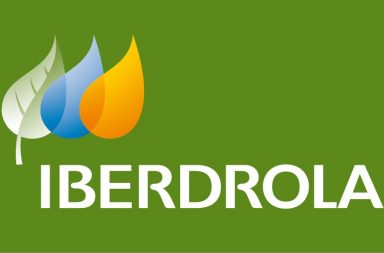Content

The Take Profit order closes a position and secures a profit when the instrument’s price moves favourably. Setting a Take Profit order above the current market price for a long position closes the position once the target level is reached or surpassed. Similarly, for a short position, a Take Profit order below the current price leads to automatic closure upon hitting the specified price during a downward movement.

Both Stop Loss and Take Profit orders are basically you as a trader telling your broker when to close your trades. A stop-loss is designed to let your broker know how much you are willing to risk with your trade. It tells your broker how much you are willing to make as a profit with one trade and close it once you’re happy with the amount. Both stop loss and take profit options are tools that can be used on the trading software you will be using with your brokerage. But if it doesn’t you may check with your service provider since the tool is very important. Both stop loss and take profit orders may seem very easy at one glance.
Moving averages
I mean various “price chart formations” or, as they are also referred to, chart patterns. And it continues moving after the stop also in a similar manner. In fact, few forex traders understand the real purpose of stop loss and take profit. Setting up take-profit and stop-loss orders can help protect a trader’s portfolio from excessive losses and optimize returns. This is a free, accessible, and easy-to-implement way to insulate your decision-making from emotional influences and protect your capital from sharp market turns.
If the price starts to drop, the stop loss will not move back down with it, and the trade will be executed as a market order at $1,092. This stop order is used by trend traders, who like to keep a position open for a longer time, without having to adjust their stop frequently. There’s also the support method which involves hard stops at a set price. You’ll need to figure out the most recent support level of the stock. As soon as you’ve figured that out, you can place your stop-loss order just below that level.
If the stock has a breakout, the trader expects that it will rise to 15 percent from its current levels. If the stock doesn’t breakout, the trader wants to quickly exit the position and move on to the next opportunity. The trader might create a take-profit order that is 15 percent higher than the market price in order to automatically sell when the stock reaches that level. At the same time, they may place a stop-loss order that’s five percent below the current market price. Adam Lemon began his role at DailyForex in 2013 when he was brought in as an in-house Chief Analyst. Adam trades Forex, stocks and other instruments in his own account.
Stop Loss and Take Profit in Forex
Instead of using market orders in real-time, traders can set these levels to trigger automatic selling without having to monitor the markets 24/7. Binance Futures, for example, has a Stop Order function that combines stop-loss and take-profit orders. The system decides if an order is stop-loss or take-profit based on trigger price levels and last price or mark price when the order is placed. A stop-loss (SL) level is the predetermined price of an asset, set below the current price, at which the position gets closed in order to limit an investor’s loss on this position. Conversely, a take-profit (TP) level is a preset price at which traders close a profitable position.
These orders have proven reliable in the crypto markets and other financial markets. Using strategic stop-loss and take-profit orders in planning your trades also helps maintain a tight risk management strategy. The tools help you define your risk-to-reward ratio, the amount of risk you are willing to take in trade in relation to the potential reward. Furthermore, not having a predefined profit target can cause you to close out profits too early or leave a trade running for too long. Relying on gut feelings to close trades can affect your trading psychology, making emotions like fear, greed, doubt, etc., lead to making the wrong moves. Then based on this level, you will be able to place a Take Profit order.
Orders: Market, Limit, Stop, Buy and Sell in Forex
Stop losses and take profits come into action not immediately but under certain conditions in the future. In other words, these orders wait for a trigger or fulfillment of conditions. There is an opinion that it is more efficient to use take profit in scalping during sharp impulse movements or during the range trading. A preliminarily posted take may reduce a possible profit during the trend movement. If you are interested in more details about MA and other popular trading indicators, check out this article. A detailed overview of the concept of support and resistance can be found here.
It is very possible to be right about entries consistently and to still lose money overall. Assuming that you have a good entry strategy, how can you best exploit it? Is there a better, more dynamic methodology than just setting stop loss and take profit levels and walking away? There is, https://g-markets.net/helpful-articles/ig-index-client-sentiment-analysis-using-excel/ although this can be challenging as “set and forget” methods are psychologically easier to implement. OI grows when traders open new positions and falls when traders close their positions. Position closure could be caused by stops, takes and market orders, which were posted manually.
Stop losses and
Making a conclusion, we can say that it is highly important to place Take Profit orders. They help to eliminate the destructive impact of emotions on your trade as you should plan TP at the moment of entry. One of the most popular TP strategies is to use resistance/support levels as profit targets.
Keep reading to learn why stop-loss and take-profit levels should be a part of your trading strategy. If your trade moves in the direction you predicted, the trailing stop moves with the market, in the same direction as your potential profit. It remains the set amount of points away from the market price that you chose and will only be executed when the market moves against you by that amount.
The approach of trading scenarios itself suggests that you give up trying to predict the future price movement. You have only either “the pattern completed” or “the pattern didn’t complete”. Besides you know in advance at what point it will be confirmed that it “worked out” and at what point “it failed”.
What Are Stop-Loss and Take-Profit Levels and How to Calculate Them?
If the mark price reaches or exceeds the trigger price, the Stop-Loss/Take-Profit order will be converted to a live order and placed in the order book. If the mark price does not reach the trigger price, the Stop-Loss/Take-Profit order will remain active until it is canceled or triggered. The Take Profit/Stop Loss feature allows users to maximize profit or reduce loss by automatically exiting a trade when the asset’s price reaches a user-set price. Posting stop losses and take profits allows increasing the position size step by step. Open Interest will give you a clue about whether the current trend still has strength and what feeds it. If the price falls or grows only due to position closing and traders do not open new orders, such a movement cannot last long.
- The stop loss may be made dynamic, as a way to lock in profits on a trade that progresses profitably.
- On the other hand, take-profit orders are executed at the best possible price regardless of the underlying security’s behavior.
- In this way, a trade that performs well will end up giving some profit.
- An OCO close order, meanwhile, is a type of exit order that involves setting both a stop and a limit at the same time.
- In this article, you will learn how to use parabolic SAR to set stop-loss and take-profit levels for your trades.
You can change orders once in trade, but it’s recommended to avoid changing Stop Loss order once set, as traders get influenced by the power of open position once they are in an active trade. Order placements and size should be dictated by trading setups and not on your needs. You cannot force the market to produce trading opportunities for you or the kind of opportunities you wish to trade.
What Is a Trailing Stop Loss?
It’s important to note that in periods of high volatility, your stop loss may not be filled at the level you set. Know where you are going to place your stop before you start trading a specific security. Slippage refers to the point when you can’t find a buyer at your limit and you end up with a lower price than expected. For example, if you buy Company X’s stock for $25 per share, you can enter a stop-loss order for $22.50. But if Company X’s stock drops below $22.50, your shares will be sold at the current price. Skylar Clarine is a fact-checker and expert in personal finance with a range of experience including veterinary technology and film studies.

